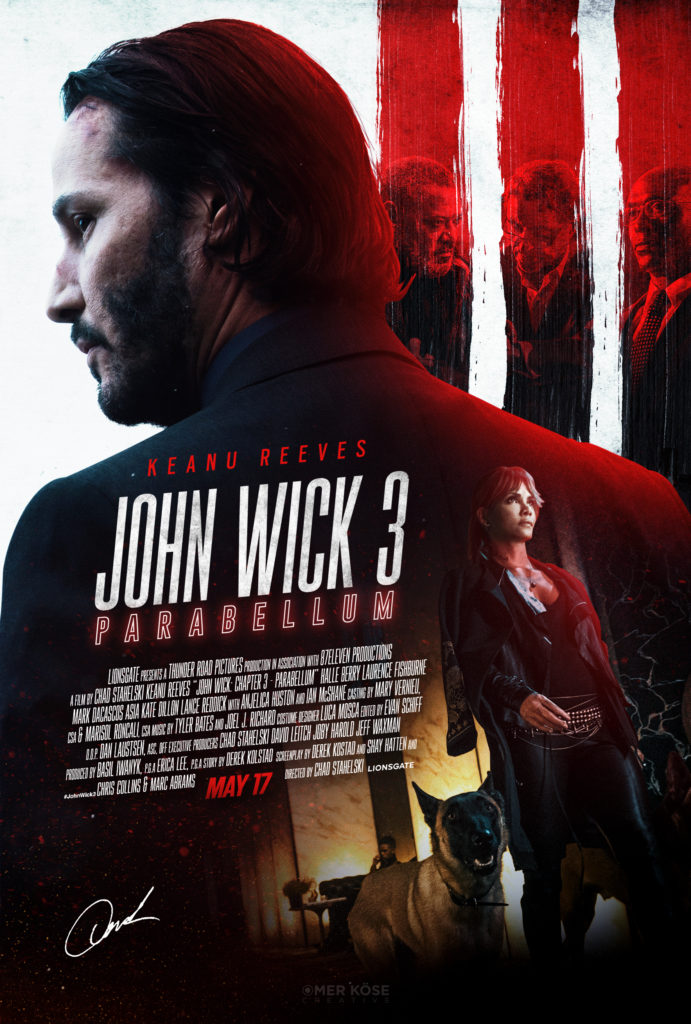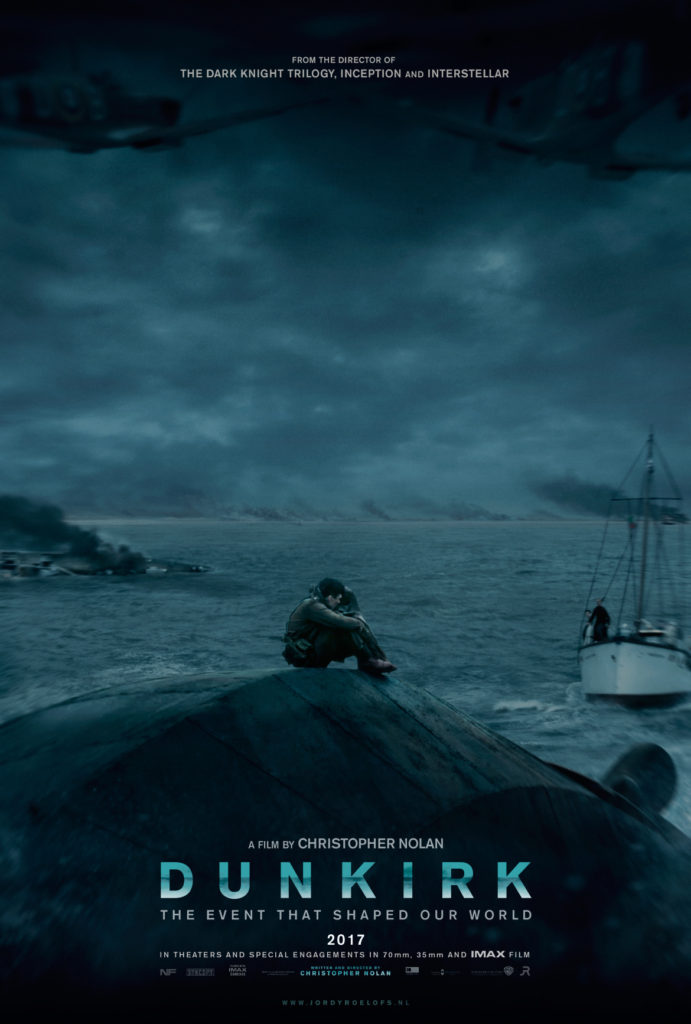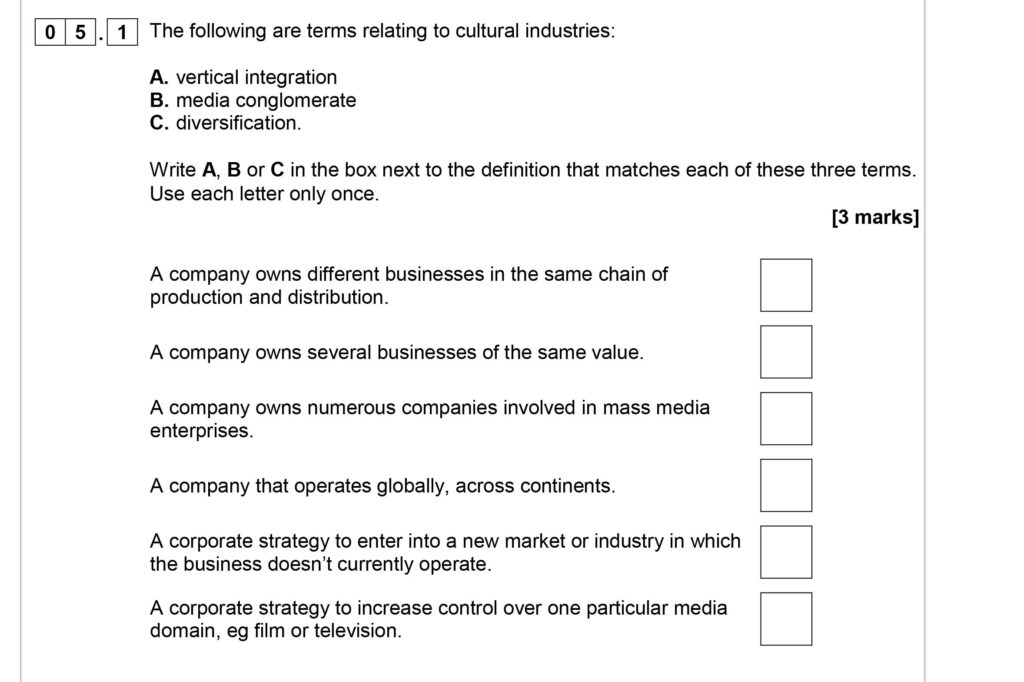The language of moving image suggests that there is a grammar or convention or set of rules. It deals with the aesthetic concepts of shape and size.
One of the most important camera tools in a movie is focus and depth of field. The focus is used to direct the audience’s eyes and prioritise the elements in a shot to present certain information.
Different MEDIA FORMS have different MEDIA LANGUAGES
camera – the most important tool in a camera is the focus and depth of field (ie how much is in focus). The focus is used to direct and prioritise elements in a shot and therefore prioritise certain information. For example, it will determine who the audience should look at (even if we are not listening to them). It may switch our focus (known technically as a pull focus / rack focus / follow focus) between one element and another. Remember that the elements may not be people, but could be objects, spaces, shapes or colours, which may represent an idea, theme, belief etc (see the post on Semiotics)
- High angle / Low angle / bulls-eye / birds eye / canted angle
- Tracking / Panning / Craning / Tilting / Hand held / Steadicam
- Establishing Shot / Long Shot / Medium Shot / Close-up / Big Close-Up / Extreme Close Up (students often struggle with the first and the last again issues with SCALE, SIZE & SPACE, so practice is really important)
- Insert Shot
Sizes: Establishing shot – Insert shot – Long shot – Medium shot – Close-up – Extreme close-up.
Angles: High – Low – balls-eye – Birds eye – Canted angle
Movement: Tracking – Panning – Craning- Tilting – Hand-held – Steadicam
Distinguishing Editing from Camera work (theory)
Moving image products (like other media products: print, radio, on-line) are clearly constructed around the concept of putting one thing next to another. This can be found in both camera work and in editing. Editing is the process of manipulating separate images into a continuous piece of moving image which develops characters, themes, spaces and ideas through a series of events, interactions and occurrences. As such, it is (usually) LINEAR and SEQUENTIAL, although, it must be remembered that moving image products often parachute the audience into a particular moment (IN MEDIA RES) and usually leave them at an equally unresolved moment.
Moving from Camera to Edit, would be to compare the way that the camera can frame and position characters and thereby the audience by creating ‘subjectivity‘ and empathy. This is so important for creating a story, characters, a theme and of course COMMUNICATING MEANING. Similarly, the way in which images are edited together has a massive significance in terms of communicating an idea and of creating meaning.
Moving image products (like other media products: print, radio, on-line) are clearly constructed around the concept of putting one thing next to another. This can be found in both camera work and in editing. Editing is the process of manipulating separate images into a continuous piece of moving image which develops characters, themes, spaces and ideas through a series of events, interactions and occurrences. As such, it is (usually) LINEAR and SEQUENTIAL, although, it must be remembered that moving image products often parachute the audience into a particular moment (IN MEDIA RES) and usually leave them at an equally unresolved moment.
As such BACK STORY, FORESHADOWING, REPETITION, ELLIPSIS, DEVELOPMENT, ENIGMA, DRAMATIC IRONY and other concepts are really important to always bear in mind. As such, NARRATIVE THEORY is really important to an understanding of moving image products.
- EDIT ON ACTION
- EDIT ON A MATCHING SHAPE, COLOUR, THEME
- EDIT ON A LOOK, A GLANCE, EYELINE
- EDIT ON A SOUND BRIDGE
- EDIT ON A CHANGE OF SHOT SIZE
- EDIT ON A CHANGE OF SHOT CAMERA POSITION (+30′)
Shot Sequencing 4: Parallel Editing
The use of sequential editing (editing one clip to another) allows for a number of key concepts to be produced:
Montage consists of number of shots put together to inform the audience context to a character or situation.
parallel editing : two events editing together – so that they may be happening at the same time, or not?
- parallel editing: two events editing together – so that they may be happening at the same time, or not?
- flashback / flash-forward – allowing time to shift
i would use parallel editing to show the past life of the dead character
Shot sequencing 1: Montage
Editing is the process of putting one element / idea next to another. It was first conceptually theorised as the Kuleshov effect, in that adding one element / idea to another actually produces a third idea / element, which if constructed well can produce in the audience an idea that isn’t actually present! This is the basis of MONTAGE EDITING – often the connection of images / ideas to create a new meaning (1 + 2 = ?). It is often seen as an allegorical, metaphorical way of editing to create symbolism, in the same way COLLAGE and MONTAGE ART creates meaning through putting ideas and objects next to each other.
Shot sequencing 4: Shot progression
Conventional shot progression – to create VERISIMILITUDE (ie realism, believability) usually involves the following shots (although not always in the same order).
- establishing shot / ES, moving to
- wide shot / WS,
- to medium shot / MS,
- to close up / CU,
- to big close up / BCU;
- and then back out again
The use of these shots allow the audience to understand SPATIAL RELATIONSHIPS between locations, people, movements etc. The length of shot will determine the drama, empathy, theme etc. The choice of how to sequence each shot will determine the AESTHETIC QUALITY of the product. The next sequence will then follow a similar pattern, which again allows the audience to understand concepts such as SPACE, TIME, DISTANCE, MOVEMENT, MOTIVATION, PLOT, THEME etc.
Shot Sequencing 5: Shot / Reverse Shot
The Shot / Reverse Shot a really good starting point for students to both think about and produce moving image products. The basic sequence runs from a wide angle master shot that is at a 90′ angle to (usually) two characters. This sets up the visual space and allows the film-maker to to then shoot separate close-ups, that if connected through an eye-line match are able to give the impression that they are opposite each other talking. The shots are usually over the shoulder. Firstly, they include both characters – which are called EXTERNAL REVERSES. As the drama increases, the framing of each shot then excludes the back of the head of the other character and moves in to a much closer over the shoulder shot – which are called INTERNAL REVERSES. Remember that these shots are not creating a direct look to camera. To look directly at the camera creates a very different relationship between the characters and the audience and is a technique that is only used for specific techniques / genres / film-makers. These type of shots are known as Point of View Shots – POV shots, or even direct address to the camera, and are quite different to over the shoulder shots, close-ups, reaction shots, internal and external reverses etc. All of which are deliberately used to create a range of subjective / objective positions for the audience as they engage with characters in the moving image products. AND NOT FOR THE CHARACTERS TO LOOK DIRECTLY AT THE AUDIENCE (ie directly into the camera)
to use a reverse shot i would create a tense conversation.






